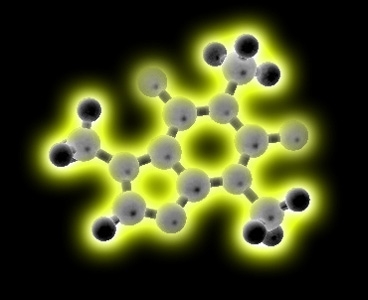A glow of recognition
By By David L. Chandler, MIT News Office | 14 Dec 2011
Researchers at MIT have developed a new way of revealing the presence of specific chemicals - whether toxins, disease markers, pathogens or explosives. The system visually signals the presence of a target chemical by emitting a fluorescent glow.
 The approach combines fluorescent molecules with an open scaffolding called a metal-organic framework (MOF). This structure provides lots of open space for target molecules to occupy, bringing them into close proximity with fluorescent molecules that react to their presence.
The approach combines fluorescent molecules with an open scaffolding called a metal-organic framework (MOF). This structure provides lots of open space for target molecules to occupy, bringing them into close proximity with fluorescent molecules that react to their presence.
The findings were reported in the Journal of the American Chemical Society in a paper by assistant professor of chemistry Mircea Dinca, with postdoc Natalia Shustova and undergraduate student Brian McCarthy, published online in November and to appear in a forthcoming print issue.
The work could have significant applications in sensors attuned to specific compounds whose detection could be read at a glance simply by watching for the material to glow. ''A lot of known sensors work in reverse,'' Dinca says, meaning they ''turn off'' in the presence of the target compound. ''Turn-on sensors are better,'' he says, because ''they're easier to detect, the contrast is better.''
Mark Allendorf, a research scientist at Sandia National Laboratory, who was not involved in this work, agrees. ''Present materials generally function via luminescence quenching,'' and thus ''suffer from reduced detection sensitivity and selectivity,'' he says. ''Turn-on detection would address these limitations and be a considerable advance.''
For example, if the material is tuned to detect carbon dioxide, ''the more gas you have, the more intensity in the response,'' making the device's readout more obvious. And it's not just the presence or absence of a specific type of molecule: the system can also respond to changes in the viscosity of a fluid, such as blood, which can be an important indicator in diseases such as diabetes. In such applications, the material could provide two different indications at once - for example, changing in colour depending on the presence of a specific compound, such as glucose in the blood, while changing in intensity depending on the viscosity.






























